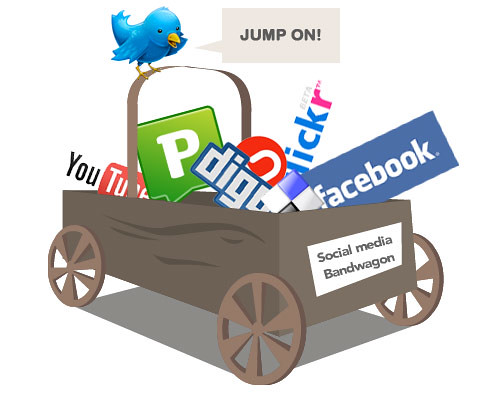You are currently browsing the daily Archive for February 15th, 2011.

What is microblogging?
A service that allows users to publish brief text messages, usually no more than 140 characters, with links to other Web sites, photos or videos.
Why microblog?
- Allows you to share a link to the article you’ve written.
- Your content will get read much quicker.
- Connects you with other journalists and readers.
Why is community important?
- Response and reaction is the WHOLE point of microblogging!
- The biggest benefit of microblogging is learning about your audience.
- Invite your audiences to work with you.
- Your audiences could help you look for leads, find background or other information on a particular subject/event.
80-20 Rule.
Use 80 percent of your posts to add something of value to the community and the other 20 percent can be used for self-promotion (links to your other articles, blogs, etc.)
Ambient awareness or ambient intimacy: the ability to maintain a constant connection with others without a direct communication tool like phone or e-mail; allows for one-to-many communication
The emergency of the “Real-Time Web.”
- It allows readers to know what is happening right now.
- Users on a scene can start spreading the word immediately.
- Countless news stories break first on Twitter.
Advice to journalist students…
- “One great thing about Twitter — and this is why it is so useful to student journalists — is that after a while it trains you to look for interesting things around you (and think how you can communicate that in 140 characters,” said Bradshaw, a journalism lecturer in Birmingham, England.
- “The opportunity of social media is important to younger journalists just starting out. News companies expect that interns and fresh-out-of-college new hires will possess a proficiency in social media. In fact, proficiency with new technology can help you land your first job” Briggs said.

Mandy Jenkins, Social Media Editor of TBD.com, visited our class on Feb. 10, to discuss the importance of social media networks in one’s professional and personal life.
Jenkin’s advices:
- Build a blog to reach a lot of people.
- You should do personal work to get yourself hired.
- Interact and connect with others – get your name out there!
About TBD.com:
- Local news Web site for D.C., Northern Virginia and Maryland
- Covers local (ex: Metro) and hyper-local news (ex: neighborhoods)
- Likes to cover big or small stories that affect people’s day-to-day lives.
- A team of 15 reporters and 200+ bloggers
- Work with freelancers
The Role of a Social Media Editor:
- 90% of time is spent listening, researching, digging into information that is available – particularly through Twitter
- Tweets help reporters get a jump start on what to write about
- 10% of time spent sending news to CNN, Huffington Post, etc. to get attention
TBD’s bloggers:
- Found based on their credibility
- TBD links directly to blogger’s post
- TBD not responsible for what is posted by bloggers
Helpful Websites:
- HootSuite or TweetDeck – builds Twitter lists
- Twellow – lists Twitters by popularity
- Trendsmap – shows what people are talking about in different areas of the country
- Storify – builds a story that pulls in other people’s Tweets, photos from Flickr and videos from YouTube
- Xtranormal – aids in creating animation
